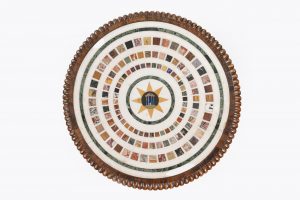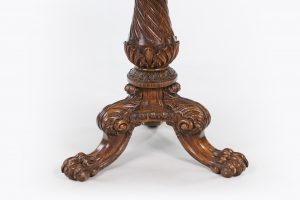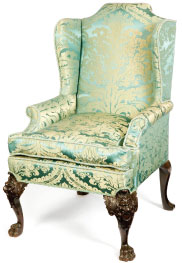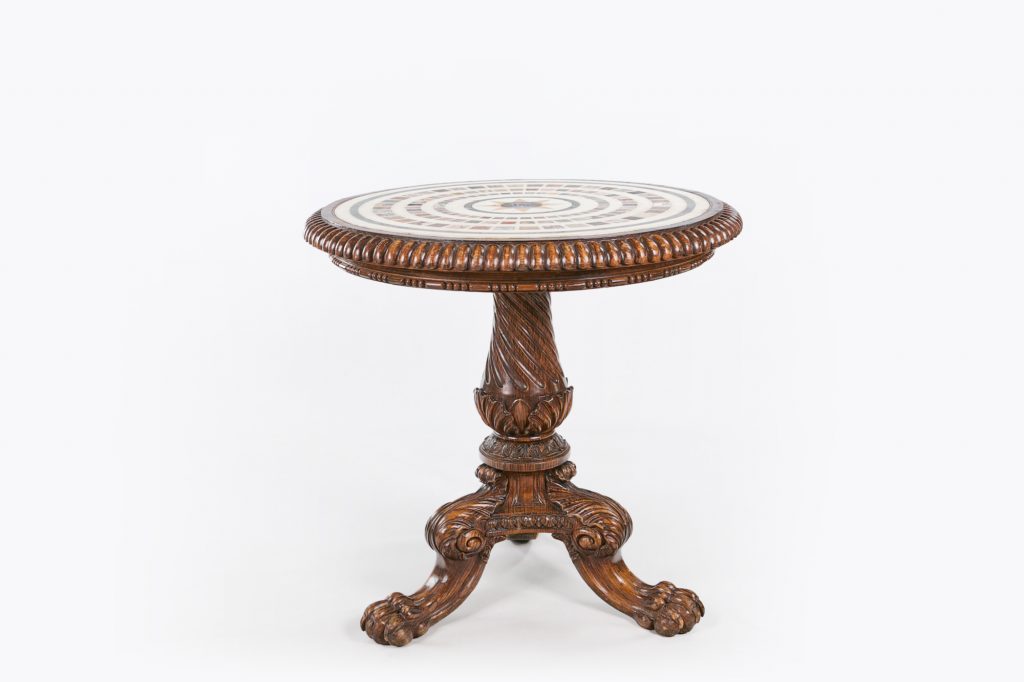Gillows of Lancaster and London, also known as Gillow & Co., was an English furniture making firm based in Lancaster, Lancashire, and in London. It was founded in Lancaster circa 1730 by Robert Gillow (1704–1772). Gillows furniture was a byword for quality, and other designers used Gillows to manufacture their furniture.
Gillows furniture is referenced in literature by Jane Austen, Thackeray and the first Lord Lytton, and in one of Gilbert and Sullivan’s comic operas. By the mid-18th century the firm was one of the leading cabinet-makers in Lancaster. They had a reputation for manufacturing very high quality furniture. The company won commissions to furnish and decorate public buildings in Australia, South Africa, India, Russia, Germany, France and the United States. It provided furniture for aristocratic houses, such as Tatton Hall, where some 150 extant pieces complement the work of the architect Lewis William Wyatt.
Pieces of Gillow furniture can now be seen in museums in London, Leeds, Adelaide, Melbourne, and Auckland, as well as a collection in the Gillow Museum in the Judges’ Lodgings, Lancaster. The furniture can also be seen in houses open to the public such as Tatton Park.

These images depict a very rare early 19th Century Regency marble top specimen centre table by Gillows of Lancaster and London, the statuary white marble top with central stylized Neoclassical motif depicting a temple and star surrounded with inlaid radiating specimens of rare and ancient stones such as Giallo Antico, Verde Antico, Rosso Antico, Sienna, Jasper and Portoro set within carved gadrooned, cabochon and bead border.

The stunning marble specimen top is supported on turned baluster pod with barley twist and acanthus motif on trefoil base raised over cabriole leg with acanthus motif on knee terminating on paw foot.
Provenance: Torridon House, Achnasheen, Wester Ross, Scotland.
Torridon House is situated on the northern shore of Upper Loch Torridon, beneath the dramatic mountain ridges of Beinn Alligin and Liathach, the house was built by Duncan Darroch in 1876, the architect was Alexander Ross, who built Inverness Cathedral. In the early 20th century it was bought by the 4th Earl of Lovelace. The Lovelaces had previously lived at Ben Damph on the south side of the Loch, which had been in their possession since 1886. Torridon is currently the home of the 5th Earl and his wife.
Please feel free to browse through our website to see some of our fine pieces in both our Dublin and New York Galleries. If you have any questions about these pieces, or if we can assist in any other way, we are always happy to hear from you.

